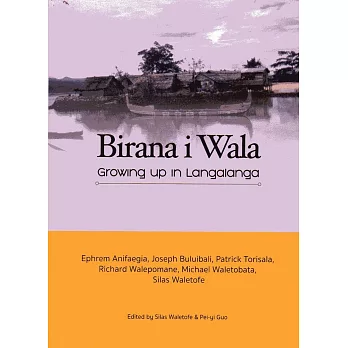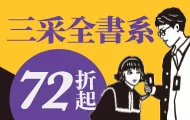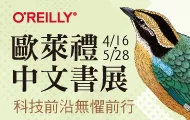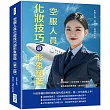序
Famadakwa / Introduction
The Wala reside in the Langalanga Lagoon on the west coast of Malaita island, Solomon Islands. With a population of only a few thousands, they are small relative to other cultural-linguistic groups in Malaita. They refer to themselves as Wala, but since the early encounters with the Europeans, the area, and thus the people, have been called ‘Langalanga’ (or Langa Langa), and today the Wala and others generally use that label.
The Langalanga economy is based on subsistence agriculture, fishing, wage labour, boat building, and particularly the manufacture and trade of local shell money (bata), which is used today for ritual purposes ‒ including bridewealth and compensation ‒ and for ornaments and sale to tourist as souvenirs.
According to Wala oral traditions, inhabitants of the lagoon formed a new cultural/language group thirteen to fourteen generations ago. Mainstream migration narratives in Wala recount that they originated mainly in Malaita’s central mountains, from whence they descended to the west coast. They later moved to offshore islets or built their own artificial islets in the lagoon a few hundred metres from shore. There they were later joined by immigrants from northern and southern Malaita, as well as from the islands of Gela, Guadalcanal, and Santa Isabel. Oral traditions and genealogies clearly indicate that there were several waves of migration to the lagoon, forming at least five to six clusters of communities of diverse origins (see Figure 0-3). The shell money industry, including its manufacture and regional trade, played a crucial role in the emergence of ‘the Wala’ as a culturally differentiated group in the island of Malaita and neighboring islands. After several cyclones, the majority of inhabitants moved from offshore islets to the coast of mainland Malaita in the 1970s; however, people in the lagoon still maintain their language and cultural heritage, and their identity as a unique group in the region.1
From Wala to Langalanga
The formation of the ‘Wala’ as a group in the ‘pre-contact’ era was a process of encounters of various populations. Several authors in this book have provided accounts of the early history based on oral traditions, including the descending journeys, the introduction of shell money, the building of artificial islets, the establishment of clans and shrines, and the engagement with various supernatural and human beings; there is no need to repeat their words in this introduction. However, the formation of ‘Langalanga’ is a story of another set of encounters in more recent history, and below is a brief version for readers who are not familiar with the region.
The Spanish sailor Álvaro de Mendaña first traveled into Solomon waters in 1567. Although he arrived at the area of Are’Are in south Malaita (Burt 1994:86), the record of his voyage indicated that he had no contact with the Wala people. For about two centuries Mendaña’s voyage record remained undisclosed, and the Solomon Islands area was not visited by Europeans until the 18th century, when Pacific trading activities started to intensify. Europeans sailors were more familiar with bays and harbours in South Malaita (near Makira/San Cristobal) and north Malaita (near the Lau lagoon, close to Santa Isabel), and also a few harbours on the east coast. The name Langalanga probably first appeared in a British official document in 1889 (see below).
However, stories of European visits and the goods (especially iron tools) and diseases they brought usually go beyond the range of direct contact (Bennett 1987: 31-44, Corris 1973:21). It is highly possible that Wala people had heard of the ‘white men’ (called ara’ikwao by their bush neighbors) quite some time before they actually encountered one. With their expertise in regional trade, they probably had obtained European goods and gained some knowledge of the foreigners very early on. Few records of Langalanga area were left by recruiting vessels during the heyday of labor recruitment in the second half of the 19th century.2 Accounts of the first contact recited in central Langalanga were not pleasant stories, but depictions of violent abductions (called blackbirding) which happened between labor recruiting vessels and local people in many parts of Malaita3. A good example was told by the late Anistolo of Talakali village:
At first the blackbirding ship came and stopped at the beach.
Several [local] people went with the intention of trading shell money with them, and the people on the ship said ‘la mae, la mae’ (come, come) and showed them a kind of glass. However, after they got on the boat, they were pushed to the bottom [deck] and were carried away. The boat had already blackbirded several men from another place by the same method.
Since 1885 the British navy, under the commander-in-chief based at the Australian Station, sent a few vessels to the region to make geographical surveys, collect hydrographic information, and inquire into reported outrages against natives committed by British subjects and other matters. The term ‘Langa Langa’ first appeared in the report of proceedings of H.M.S. Raven, under Lieutenant-commander Frank W. Wyley in 1889.
‘3. … I proceeded in the afternoon (22nd) for the west coast of Maleita Island, Solomon Group, and arrived, the afternoon 21st July, off a place called Langa-Langa, about a mile south of Alit Bay [Alite Bay].’4
It is unclear where exactly this ‘Langa-Langa’ was; a guess offered by some authors of this book is that it refers to the island of ‘Lalana’ not far from Alite. Another vessel, H.M.S. Royalist, visited Langalanga again two years later, and described the area as ‘Langa Langa Harbour’5. In 1893, H.M.S. Curacoa was given a secret mission to declare a British Protectorate in the Solomon Islands. It traveled all over the islands trying to raise British flags and send out letters of proclamation; amongst the locations was Laulasi island in the Langalanga lagoon.6 In the first two to three decades of encounter with the Europeans, central Langalanga (Alite Bay, Langa Langa Harbour) was the main ‘contact- zone’, where they traded with the Europeans, participated in the international labour market, and even worked as interpreters.7
The name ‘Langa Langa’ probably again appeared in an official publication of the Great Britain Hydrographic Department in 1902 (Pacific Islands, 3rd edition). Starting as a location reference, the term ‘Langalanga’ (spelled sometimes as Lana Lana, Lana Lana, Langa Langa or Lanalana) continued to be used as a geographical label, and the range it signified shifted from an island and its surrounding harbour (until the early 20th century) to the whole 19 km-long lagoon, which appeared regularly in annual reports since the 1930s, and on maps produced by colonial officers. In the meantime, the Wala people who resided in the lagoon started to have a new name; they were later officially categorized as ‘the Langalanga’ by the British colonial administration.8
Today Langalanga is a widely recognized name of the group in Solomon Islands; however, the traditional name ‘Wala’ is not forgotten: people still refer to themselves and their language as ‘Wala’. By paralleling these two terms in the book title, Birana i Wala: Growing up in Langalanga, we hope to mark the subtle differences embedded in the bilingual texts.
Cultural Recording Project: A Local Initiation
My connection with the Langalanga people dates from July 1995, when I spent a month on Malaita during a preliminary field trip. I returned to live in the lagoon for a longer period of fieldwork from February 1997 to May 1998. After completing my dissertation, Landscape, History and Migration among the Langalanga, Solomon Islands, I obtained a PhD degree from the Department of Anthropology of the University of Pittsburgh at the end of 2001. I have been working as a full-time researcher in the Institute of Ethnology at Academia Sinica in Taiwan since 2002. Over the years I have benefited from institutional support and funding for several return visits to Langalanga.
Soon after we met in 1997, my research partner in Langalanga, Silas Waletofea, told me that he had been interested in recording ‘kastom’ and history, and had compiled a complete genealogy of his fuiwale (clan). He also had written several articles, which included stories of his ancestors and other cultural practices. However, his cousin borrowed those and later lost them while travelling. Other people told similar stories, and we began to discuss whether there might be a better way to preserve and organize materials, and at the same time share some of the writings.
Silas suggested that we organize people to work on a cultural recording project with the goal of documenting the fast-disappearing tradition (kastom) of Langalanga (Falafala i Wala) and the history of their ancestral past. His father (a fataaabu, traditional priest) once told him that someone claimed to have written an entire book about culture, but no one else had ever seen the book. Silas felt that even if such a book really existed it would be useless to the general public if the writer refused to share his knowledge. The cultural recording project he had in mind was intended not just to record, but also to make knowledge into educational materials for the younger generations. He talked to other people in the area, and gradually gathered a team of six Langalanga men: Silas Waletofe, Ephrem Anifaegia, Richard Walepomane, Patrick Torisala, Joseph Joe Akuna Beluibali, and Michael Waletobata.9
Following the examples of previous researchers in the Solomon Islands, such as Roger Keesing, Pierre Miranda, Ben Burt, David Akin, Clive Moore, and Edvard Hviding. I see cooperative research with local participants to be at the core of the ethos of contemporary anthropology. I have also been inspired by the broader movement in Oceania studies and globally toward the repatriation of indigenous knowledge collected by researchers.10 It is my great pleasure to join the team and have the opportunity to collaborate with Langalanga friends on projects to record local culture. This book is the first result of our work, and we have experimented to find our own way to proceed in this unprecedented project.
We first developed a few principles about the project in the early stage. Everyone would be free to write about what he knew best, and we would find a way to organize them into a single volume later. We also agreed that the final format would be bilingual, with both Wala and English texts. In the meantime, each person would write in the language he felt most comfortable with, and it would be translated into the other language at a later stage.
We also decided that the project would be structured so the Langalanga members of the group would compose the main body of the book’s contents, with me taking a supportive role. In addition to computer-related services and the organization of the book contents, my jobs included seeking funding for the write-up process11, and overseeing the book’s editing, publication, and distribution. I have also served as an informed outside reader to help clarify points, and provided supplemental materials, especially photographs from my research and archives.
In the first phase of our work, we developed a standard procedure. Silas
■ Figure 0-2 Project members in discussion at Raolo
was in charge of collecting writings. He mailed photocopied versions to me, and to avoid any chance of loss in the mail, kept the originals at home. My research assistants and I would then type them up, and send printed drafts with comments or questions back to Langalanga. Silas distributed these to the original writers so they could make corrections and changes, and then sent them back to Taiwan. It typically took several weeks for the mail to arrive.
My ability to return to Langalanga for short visits made the joint
project feasible. Although much work was done via the mail, face-to-face communications were crucial to regenerating our motivation and enthusiasm on both sides, and have facilitated our progress. Our group has made its most important decisions about the project’s direction and priorities during joint discussions when I visited Langalanga on field trips. With the grant awarded from the Wu Ta-you Junior Scholar Reward of the National Science Council, I was able to bring Silas to Taiwan in the October of 2010, where we worked intensively to compile the first draft of this volume.
Another factor has been key to smooth the progress of the joint project. Dr. Ben Burt has been working with the Kwara’ae people, especially Michael Kwa’ioloa, on similar projects for a long time, and he kindly sent me copies of their recent publications to share with my Langalanga friends. Their book A Solomon Islands Chronicle ‒ As Told by Samual Alasa’a (2001)12 inspired members of our group, and many people read it with enthusiasm, particularly because of the close connection between the Kwara’ae and Langalanga cultures. It showed what could actually be done, and also how anthropologists could work together with Malaitan people to realize a joint product. This example of an anthropologist contributing to the formulation of a book via archival materials, photographs, and ethnographic comparisons to supplement local stories helped pave the way in my communications with group members, and enhanced our mutual trust.
Birana i Wala
In February of 2007 I returned to Langalanga for a visit, and again met with the project members. After going through the sixty articles that we had accumulated for the theme of the first volume, a common topic emerged ‒ the passage of life for men and women. In this connection we had materials about childbirth, children’s play, women’s puberty rites and menstrual huts (bisi), the gathering place of men and space for priests (feraabu), engagement and marriage rituals, and funerals and mortuary rites. These were less sensitive or controversial topics than some of our other materials, and we decided making the first volume about them would be a safer choice. It could lay a great foundation in respect to understanding Wala kastom.
A few titles were discussed. One possibility mentioned was ‘Iona Firi i Wala’, which was used by another cultural recorder not in our project, but it was decided against because ‘iona firi’ indicates ‘ideal life’ (including the ‘afterlife’), and it failed to capture what we wanted to say. Other titles such as ‘Iona i Lauu’ (Life in the past), and ‘Iona Afu i Wala’ (Complete life of Wala) were also considered, as was ‘Falafala (halahala) i Wala’, ‘The custom of Wala’. However, Silas felt that the latter term ‘falafala’ refers more to juridical custom than the daily life described in our texts. Finally further discussion yielded the suggestion of ‘Birana i Wala’, which everyone agreed was perfect, and which would be translated as ‘Growing Up in Langalanga’.
Our next discussion revolved around whether to add a suffix ‘-ga’ to the word ‘birana’. In Wala, like many Melanesian languages, the possessive is expressed in two ways, and the more ‘inalienable’ category is expressed by suffixing a pronoun to certain genres of noun root (e.g., body parts, names). So, for example, ‘rabegu’ means ‘my body (rabe)’, and ‘ratagu’ means ‘my name (rata)’. Ephrem thought that ‘Biranaga i Wala’ would be more appropriate, emphasizing the internal perspective. Silas preferred ‘birana’, a more general term, especially since I was also involved in the project and would compile various data. This delicate distinction illustrates the nature of the joint project ‒ the main texts were initiated and written by Langalanga cultural recorders, and an outside researcher filled these in with supplementary materials. We decided to preserve both usages, using ‘Biranaga i Wala’ to title one section of the Langalanga texts (Part Three of this book), and ‘Birana i Wala’ for the book’s general title. The title not only reflects the content of our first book, but it also symbolizes what we have learned from the process of the project.
Contents of the Book
We hope that this volume will enhance understandings of Wala culture in the past and present, and contribute to its development in the future. The book is divided into three major parts. Part One introduces Wala culture and society, including their history, kinship and social organization, religious beliefs, and social norms. Their history is closely related to places, especially the construction of artificial islands and the establishment of shrines. Chapter Two portrays the important social figures of the society, including the father and mother roles in the family, and traditional leadership (priests, warriors and aofia) in the community. Chapter Three deals with religious beliefs and practices. Some of them, such as ancestral worship and spatial division of gender, are widely seen in the region; on the other hand, the cooperation of various clans and their special magics is a unique feature in Wala. The society is regulated by taboos and moral codes; there are ways to deal with their violation in order to maintain harmony. In addition to the rules, Chapter Four also contains case examples and their resolutions.
Part Two illustrates daily life in the lagoon. Chapter Five gives detailed accounts of the manufacture, trade and history of shell money, which is a characteristic feature of Wala in the region. Chapter Six describes various fishing techniques and charms, some of which are no longer practiced today. Another maritime specialty ‒ canoe making and sailing ‒ is the topic of Chapter Seven. In addition to the technological details, the authors include songs that people used to sing during their journeys. Two articles on valuable knowledge including healing and the seasonal calendar are added to supplement Part Two.
Part Three explores the rites of passage in Wala lives, from birth (Chapter Eight), childhood (Chapter Nine), the teenage period (Chapter Ten and Eleven), marriage (Chapter Twelve) to the end of life (Chapter Thirteen). Throughout the pages, we are able to portray how a Wala person is expected to go through his/her life course. I want to point out particularly that sharing and co-working are the ideal modes of social life. For example, women gather to help ease the anxiety of the inexperienced mother in her first delivery; children are encouraged to bring their dishes to share when they eat together (tatakuna); young boys build their faenali houses to live and work together; young girls used to stay together through menstruation in the bisi area; relatives of the bride accompany her to the new home and helped the new couple establish their family; and when death arrives, people stay with the deceased family through the nights.
A New Move
As stated above, there have been some other cultural recording works which incorporate academic researchers and local informants in the Solomon Islands. Some of them are in the form of life histories; for example, Keesing worked with Jonathan Fifi and Elota (Fifi & Keesing 1989, Keesing 1978), Ben Burt with Michael Kwa’ioloa and Samuel Alasa’a (Burt & Kwa’ioloa 1997, 2001, Kwa’ioloa & Burt 2012), and Clive Moore with Peter Kenilorea (Moore 2008) to record their lives as a way to document kastom and history. Some projects are in the form of bilingual texts. Danish anthropologists have published a series on Rennell and Bellona stories (e.g. Elbert & Monberg 1965, Kuschel 1975). Edvard Hviding compiled custom stories of the Marovo area (Hviding 1995). Ben Burt and Michael Kwa’ioloa worked together for a long time and their bilingual publications on Kwara’ae land tenure (Burt 1992) and the forest (Kwa’ioloa & Burt 2001) contributed greatly to our understanding of Malaita kastom.
Learning from the preceding works, this book is another collaborative project; however, it works in a new mode in two senses. Firstly, local participants carried out the major task of writing, which was different from the earlier pattern of being orators and informants, while academic researchers produced the written texts. Moreover, Wala writers initiated the project and organized themselves into a collaborative group; in comparison with earlier examples, the academic researcher stepped back and took an assisting role. I consider myself to be an engaged but passive editor, leaving local voices as strong as possible.
In terms of publication, all these collaborative projects were supported by the researcher’s institutes, which often published them (e.g. the National Museum of Denmark, the British Museum). Sometimes institutions in the Solomon Islands were involved (eg. Solomon Islands College of Higher Education, and the University of the South Pacific in Honiara). Hviding’s edition of Marovo stories was probably the first to be published jointly by academic and local institutions (University of Bergen and Solomon Islands Western Province). This book is another joint-publication, and we are grateful for the support of the Institute of Ethnology, Academia Sinica and the Solomon Islands National Museum to put it into print.
We have faced some challenges partly because of the unique nature of this project, and I would like to explicate our considerations and resolutions. Firstly, we have opted not to do detailed and direct word-for-word translation between Wala and English texts. Texts in different languages are written with different readers in mind; for example, some background knowledge is basic to Wala readers, but requires some more explanation for English readers. On the other hand, for some topics the complete descriptions with meticulous details are only meaningful or appropriate for Wala readers; in such case a briefer English version is provided.
Secondly, we have decided not to unify the perspectives of the authors, and instead kept some different opinions and memories as they are. Careful readers might find some discrepancies in the articles written by different authors; for instance, the names of shell money types and techniques, the locations of fishing grounds, or the description of how rituals were performed,etc. Over the years, I have come to understand that even though the Wala constitute a cultural-linguistic group, there co-exist several ways to name or describe a few things in the area; most people recognize alternative terms and respect how others might have different preferences in their descriptions. These discrepancies might have resulted from the fact that people in Wala came from various origins, and there are several areas in the lagoon whose inhabitants speak in different intonations and probably have localized way of calling things. Leaving these minor discrepancies in the same book might puzzle some outside readers; however, it reflects the Wala attitude to encompass and acknowledge alterity and multivocality. It would be artificial to do otherwise.
In some cases, the disagreement relates to versions of history, and thus imply conflicting claims to land by different authors and their clans. It is not the purpose of this book to sort out the complicated land issues in the region, and we would not like to privilege certain versions over others. However, we are not able to present all stories and cover all groups with different interests; the book is after all selective, through the pens of the various writers. The act of writing down oral tradition, as Burt pointed out (2015: 6), helps its preservation and memory, but also risks making kastom and living history fixed. Some people might also fall into the impression (or myth) that the written versions are more authentic, legitimate, or powerful than oral ones. We do not want to encourage the potential misappropriation of this book; in particular, it should not be used as proof in any legal disputes. By presenting co-existing narratives, we hope to find balance and to achieve our goal of preserving and sharing knowledge for a better future for the Wala people.
Another disclaimer is necessary to avoid misunderstanding. The authors of this book do not take any royalties from its sale. The cost of making, printing and shipping this book is covered by the Institute of Ethnology, Academia Sinica, and the Ministry of Foreign Affairs in Taiwan. Most copies are distributed for free to educational institutions, schools and libraries in Langalanga, Solomon Islands, Taiwan and Oceania. A relatively small number of copies of this book will be sold to interested readers, and the money generated from the sales will go to the Taiwan government and the Solomon Islands National Museum. In the spirit of the mutual friendship between Taiwan and Solomon Islands, the book will be launched in the July of 2018, during the celebration of the 40th Anniversary of Independence in Solomon Islands.
Finally, this book project is another way to realize Wala values ‒ by sharing their knowledge and working together over the years to document their culture, the authors present what Wala is, not only in the form of written texts, but also in their practice of making this happen. I had the previlege to learn from them, and it is my great honour to be part of the team.
Pei-yi Guo



 天天爆殺
天天爆殺  今日66折
今日66折 
























 博客來
博客來 博客來
博客來 博客來
博客來 博客來
博客來 博客來
博客來